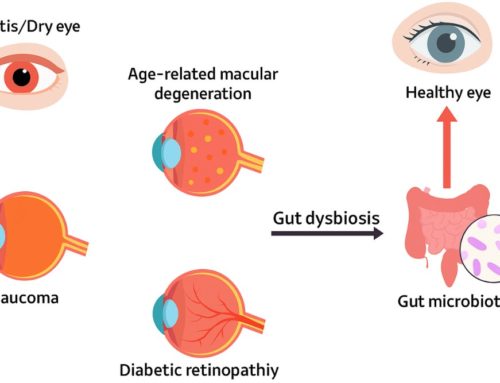Soft, flexible cartilage provides cushioning and protection, reducing bone friction and absorbing shock. If it’s damaged or worn away, those bones rub together, so every movement becomes painful. It isn’t always easy to diagnose, either, since the knees have several possible causes of bone-on-bone issues. And some of these are more unexpected than others.
When dealing with such knee pain, several treatment options are available. Though over-the-counter pain relievers help, physical therapy offers higher benefits. Tailored exercises strengthen the muscles around the knee, supporting the joint and decreasing pain. In some cases, knee replacement can be the only option. For optimal results, it is essential to identify the underlying cause, which may include some of the possibilities discussed below.

Causes of a Bone-on-Bone Knee
According to experts, trauma from sporting injuries, accidents, or falls causes cartilage loss. Bone damage may loosen cartilage until it shifts and allows the bones to rub together. Excess weight also increases pressure on the knees, resulting in cartilage damage and deterioration. However, knee pain frequently occurs from other unexpected causes, including those in the following sections.
Repetitive stress or overuse
Repetitive stress doesn’t cause bone-on-bone knee issues all at once. Instead, the consistent strain on the joint damages the area over time. It’s results from microtraumas, including running or jumping, that slowly wear away the cartilage. Those frequent stresses may also affect circulation, causing bone weakness that affects cartilage placement.
Overuse may also wear down the cartilage in the knee. Squatting, kneeling, or climbing at work slowly breaks it down. Even heavy lifting puts excess strain on the knee joints. Slow cartilage degeneration reduces the protective cushion between the bones.
Inflammatory conditions
Inflammatory diseases are chronic conditions characterized by swelling, pain, and tissue damage. A few are also frequent causes of knee issues, including bone-on-bone complications. The most common conditions causing such damage are the various forms of arthritis.
For instance, rheumatoid arthritis attacks the knee joint, causing swelling, stiffness, pain, and eventually cartilage damage. Those with osteoarthritis experience gradual wear of the cartilage in the knees and other joints. Gout frequently attacks the lower joints, causing damage and deformity that destroys protective cartilage.
Poor posture or muscle imbalance
Bad posture commonly causes issues with your spine, back, and neck. However, improper alignment also puts excess pressure on your lower joints. The abnormal strain may even wear down knee cartilage. The damage may become so severe that it causes bone-on-bone rubbing in the knees.
The quadricep muscles in the legs support the knee joint and offer increased protection. However, if these muscles are weak or imbalanced, they throw off the joint’s natural movement. Without correction, cartilage loss occurs, leaving no barrier between the bones.
Hormonal issues
Alterations in hormone levels may trigger cartilage deterioration and loss. For instance, estrogen aids in bone and cartilage maintenance. Studies show that decreased levels in women during menopause increase the risk of knee cartilage loss.
According to experts, decreased thyroid hormones alter cartilage thickness, resulting in knee bone-on-bone. Diabetes frequently causes joint issues, including instability and deformity, allowing the bones to rub together. Vitamin D deficiencies are also associated with increased cartilage loss, increasing the risk of osteoarthritis and other knee joint issues.
Resources:
- Mayo Clinic, Knee Cartilage Lesions
https://sportsmedicine.mayoclinic.org/condition/cartilage-lesions/ - Arthritis Foundation, How Fat Affects Osteoarthritis
https://www.arthritis.org/health-wellness/about-arthritis/related-conditions/other-diseases/how-fat-affects-osteoarthritis - Mass General Brigham, Knee Cartilage Injuries
https://www.massgeneralbrigham.org/en/patient-care/services-and-specialties/sports-medicine/conditions/knee/knee-cartilage-injuries#accordion-d6b2a0e044-item-f6e41ec7bf - Cleveland Clinic, Osteochondritis Dissecans
https://my.clevelandclinic.org/health/diseases/21073-osteochondritis-dissecans - OrthoInfo, Arthritis of the Knee
https://orthoinfo.aaos.org/en/diseases–conditions/arthritis-of-the-knee/ - Johns Hopkins Arthritis Center, Symptoms and Diagnosis of Gout
https://www.hopkinsarthritis.org/arthritis-info/gout/clinical-presentation-of-gout/ - Arthritis Foundation, Feb. 16, 2023, 10 Tips for Healthy Knees and Strong Joints as You Age
https://www.arthritis.org/health-wellness/healthy-living/managing-pain/joint-protection/tips-for-healthy-knees - PubMed, Feb. 2019, Quadriceps Weakness and Risk of Knee Cartilage Loss Seen on magnetic Resonance Imaging in a Population-based Cohort with Knee Pain
https://pubmed.ncbi.nlm.nih.gov/30275263/ - PMC, March 7, 2025, The Mechanism by Which Estrogen Level Affects Knee Osteoarthritis Pain in perimenopause and Non-Pharmacological Measures
https://pmc.ncbi.nlm.nih.gov/articles/PMC11942494/ - PMC, April 14, 2023, Revisiting femoral cartilage thickness in cases with Hashimoto’s thyroiditis in thyroidology: a single institute experience
https://pmc.ncbi.nlm.nih.gov/articles/PMC10176637/ - Mayo Clinic, Bone and joint problems associated with diabetes
https://www.mayoclinic.org/diseases-conditions/diabetes/in-depth/diabetes/art-20049314 - Johns Hopkins Arthritis Center, Vitamin D and Sunlight Exposure Are Associated with Reduced Knee Cartilage Loss
https://www.hopkinsarthritis.org/arthritis-news/oa-news/arthritis-news-vitamin-d-and-sunlight-exposure-are-associated-with-reduced-knee-cartilage-loss/
This content comprises informative and educational resources only and can not be considered as a substitute for professional health or medical guidance. Reliance on any information provided in this article is solely at your own risk. If you have any inquiries or apprehensions about your medical condition or health goals, talk with a licensed physician or healthcare provider.






Leave A Comment